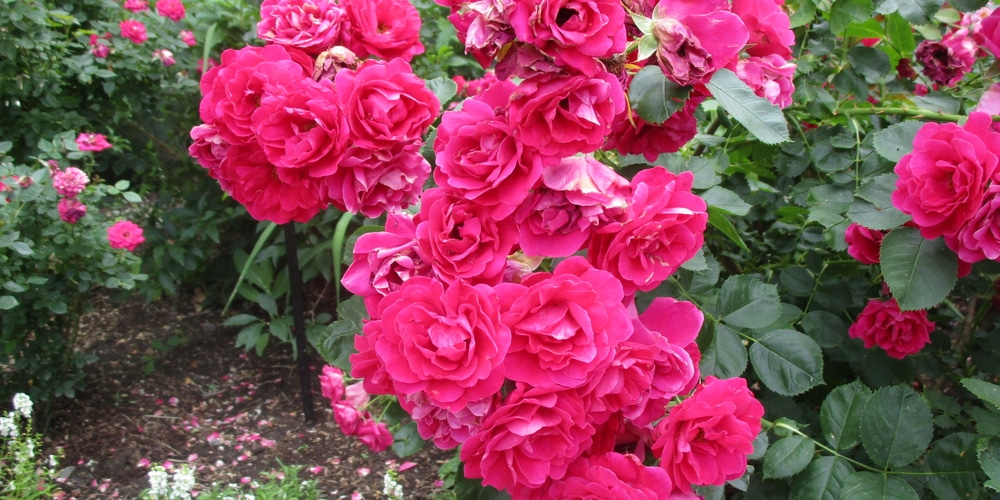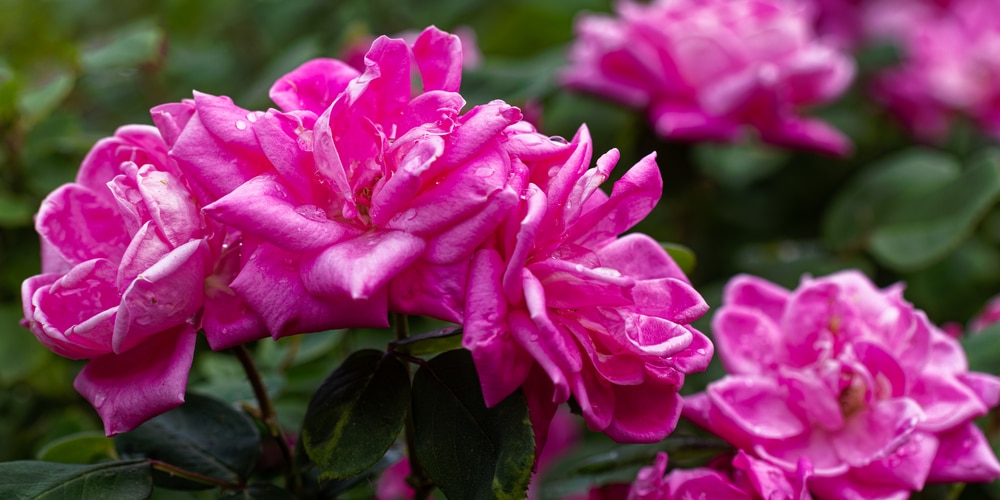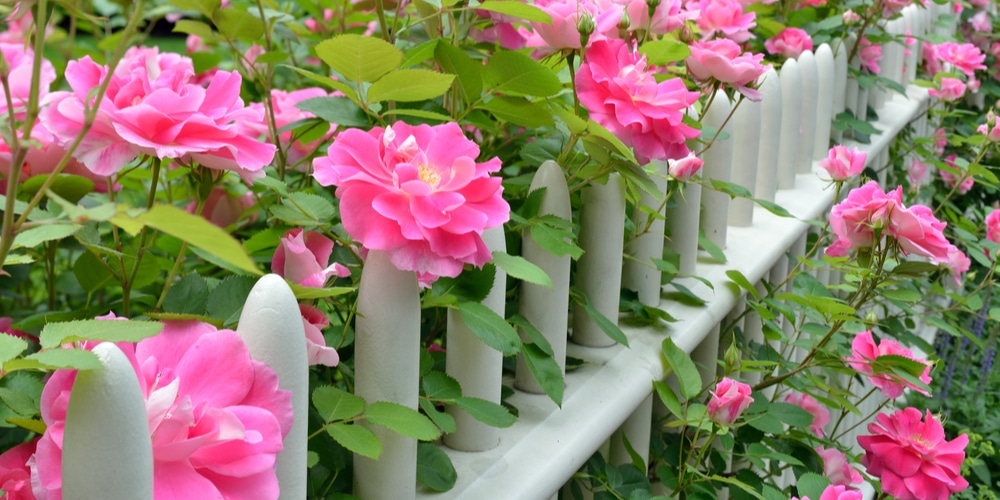Thinking of growing Knock Out Roses in containers? One thing you have to understand is what size pot for knockout roses you need for optimal growth. This article will answer the question, ‘what size pot do you need for knockout roses?’
Do Knock Out Roses Do Well in Pots?
Knockout roses can be grown in large-size pots and positioned where there’s full sun so they can grow well. If planting one in the ground for your garden or yard is not possible then a potted option should serve you well.
This rose variety is quickly rising in popularity because it doesn’t need much to thrive and gives your space a burst of color when the flowers appear. It can survive drought and is fairly resistant to most pests and diseases. Furthermore, you won’t need to prune it that much and it doesn’t need regular fertilizing. Suffice to say, it’s beginner-friendly and worth a shot.
To care for knockout roses in containers you will have to meet its basic requirements. First, it needs to have anywhere between six to eight hours of sunlight daily. Then, the soil should be a high-quality potting mix that’s also well-draining. If possible, add bone meal to encourage healthy root growth.
Knockout roses in pots, containers or raised flower beds will require more watering compared to its grounded counterparts. As a general rule, you should water every 2 to 3 days or more if the weather is hot. To keep moisture for longer you can apply an inch or two of mulch.
Deadheading, or the practice of removing spent or wilted flowers isn’t necessary for knockout varieties. However, if you’re the type who wants them to look their best you can manually cut them out. You’ll be rewarded with more blooms and colors.
How Big a Pot Does a Knockout Rose Need?
It’s important to get the pot size right when planting knock out roses. Too little and it won’t grow well, but if it’s too big then you might not be able to move it around as needed (especially during the winter).
Ideally, the size pot for knockout roses should be around 18 inches wide and 16 inches deep. If you don’t wish to overpot then you can transplant them into a container that’s twice the size as the original container it came with. Transplanting can be done anytime but it’s best to wait until the last frost has passed and when spring is coming around.
Fill the container with potting mix and secure the knockout rose plant in. It’s recommended that you choose a pot that won’t easily tip over or topple when there are high winds. More importantly, you should check the pot and see if there’s at least one drain hole so that excess water won’t collect inside and lead to root rot.
Repotting is done once every year or two and when you see roots poking out the drainage holes. During this time you should transplant in a container that’s one size bigger than its growing pot. It’s recommended that you do this late afternoon or early evening to reduce transplant shock and your knockout roses getting stressed out.
Can Roses Survive Winter in Pots?
Your Knock Out rose can survive winter when you do a process called ‘overwintering’, which basically means you put them indoors where the temperature is warmer. This way, you increase the plant’s chances of surviving by turning it into a perennial type.
Overwintering with roses in containers is easy as long as you can transport the plant. If it hasn’t grown too big or if the container isn’t heavy then you can bring it indoors when the first frost arrives. This ensures your rose will survive and get protection from the snow and freezing winds.
What Size Pot For Knockout Roses: Final thoughts
Its care requirements will still be the same, though. You will still need to give it bright light or sunlight if possible but refrain from watering too much, knockout roses hate shade. Knockout roses during this time won’t benefit from fertilization- do this when they come out in spring.
You won’t need to prune or trim the stems as well. Keep them healthy and safe, and when the last frost has gone then you can put them back to their original location. Resume watering as normal and maybe a monthly feeding schedule of fertilizer.


